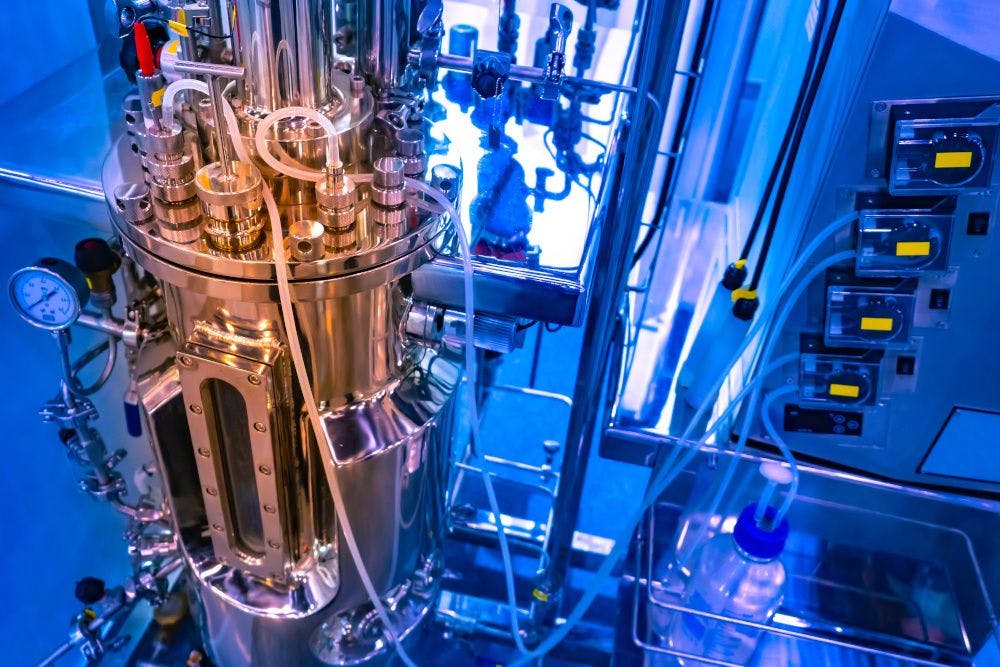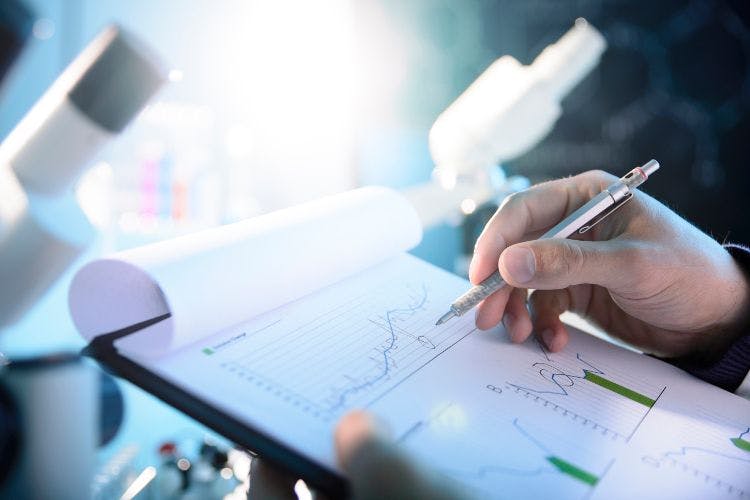Want to claim your product is free of certain ingredients? Read this first.
“Free from” claims: Dos and Don’ts
Photo © AdobeStock.com/Martina

These days, claims about what a functional food or dietary supplement doesn’t contain can attract as much attention as claims about what it does. Need proof? Research from Innova Market Insights found that the number of “free from”-related food and beverage claims jumped at a CAGR of 16% from 2013 to 2017.
But it’s a good bet that food and nutrition brands making such claims prefer that the attention they attract be positive-not the result of, say, the regulatory or legal actions their free-from claims triggered.
Alas, a tangled thicket of dos and don’ts has grown up around the free-from space, which is why it’s in the best interest of brands and consumers alike that the former step back and understand when-and how-it’s okay to play the free-from claim game.
Who’s Watching Whom?
To some extent, free-from claims are like “extra credit” for a product’s reputation-a signal to concerned consumers that this item’s done its part to avoid any number of hot-button ingredients that shoppers choose to avoid.
But for consumers with serious dietary restrictions, allergies, or intolerances, a free-from label declaration is tantamount to a safety certification. As Megan Olsen, vice president and associate general counsel, Council for Responsible Nutrition (CRN; Washington, DC), says, “There are certainly claims that are important for consumers. If properly substantiated and conveyed, they tell consumers important information about the product.”
Given such claims’ import, it’s no wonder that both FDA and FTC keep an eye on them. Olsen explains that both agencies share jurisdiction over such claims via a memorandum of understanding between the two, with FDA focusing on claims generally made on product labels, while FTC looks at claims made in advertising-whether on television, social media, or elsewhere.
That said, Olsen considers FDA the bigger watchdog, thanks to its authority and responsibility to enforce defined standards of identity and regulatory requirements over nutrient-content claims-think fat-free, gluten-free, and sugar-free-that fall within FDA’s regulatory bounds.
Of course, that doesn’t mean FTC has to keep its hands off. For example, notes Kristi L. Wolff, partner, Kelley Drye & Warren LLP (Washington, DC), “‘Gluten-free’ is a defined standard typically under FDA’s jurisdiction. However, in an advertising context, there would be no reason why FTC couldn’t take issue with it if it were used in a manner that’s potentially unfair or deceptive.”
Class Act
And the watchers are watching not just at the federal level, but in the states, where some attorneys general have made names for themselves targeting food and nutrition claims in the past.
But where Wolff locates the real source of agitation lately is the plaintiff’s bar-“namely in the form of consumer class-action lawsuits.”
Olsen agrees. “As with all consumer products and claims, we’re seeing heavy scrutiny from class-action attorneys and private consumers over these claims-and it’s not just limited to supplements and foods.”
Open to Interpretation
So why do attorneys and consumer groups have their knives out for free-from claims? Wolff thinks it’s because “companies tend to use them in conjunction with terms that are either undefined in regulations or open to interpretation.”
Consider a “preservative-free” product containing citric or malic acid for flavor. “Although it may not be functioning as a preservative in the product at issue, regulations still allow for citric acid to function as a preservative,” Wolff explains. “As such, plaintiffs argue that the preservative-free claim is misleading where the product includes an ingredient that’s a preservative under the regulations, even if it’s not functioning as one in that product.” Got that?
Similarly, branding statements claiming “no harmful ingredients” also court trouble because “what constitutes a harmful ingredient,” Wolff says, “may differ from person to person.”
The take-home lesson: “Where claims are open to interpretation, plaintiffs’ lawyers will find opportunities for false-advertising allegations,” she says. And thus far, courts have been reluctant to dismiss such cases, at least in their early stages.
That can spell big headaches for brands, as it did for The Honest Company, which positioned itself as more transparent than other brands and its line of household products as gentler than its peers, in no small part thanks to its purported avoidance of “harsh” chemicals.
But plaintiffs cried false advertising, pointing out that the products can contain ingredients like sodium lauryl sulfate, a skin irritant. And while an initial case against the company settled for $1.5 million, Wolff says, “That wasn’t the end of the issue.”
Plaintiffs alleged in a second suit that the company falsely advertised at least 41 products-from laundry detergent to children’s toothpaste-as natural, plant-based, and free of harsh chemicals when some actually contained synthetics like phenoxyethanol and methylisothiazolinone. That case settled for $7.35 million.
“These cases are a few years old,” Wolff says, “but they remain good teaching examples of how free-from messaging was prominently used and became a source of continuing scrutiny. They also demonstrate how terms like ‘harsh chemicals’ can mean different things to different people.”
When Zero Doesn’t Equal Zero
Another sticky wicket arises when “free from” doesn’t necessarily mean “zero.”
Olsen notes that a company might in good faith formulate and manufacture a product not to contain a certain ingredient, but that cross-contamination may occur. Gluten provides an apt case in point, and Olsen has actually reviewed the FDA history behind the claim’s creation better to understand its appropriate implementation.
And what did she learn? “You can put ‘gluten-free’ on products if you’re not intentionally using a gluten-containing ingredient in it and if the finished item has fewer than 20 parts per million of gluten,” she explains, which is the level that research suggests won’t produce an adverse health effect.
But just because you make your best effort not to let even a trace of gluten into your facility, “that doesn’t mean you don’t have to be careful to convey to consumers that there could be cross contamination,” Olsen continues. “That’s where it cuts both ways: We see class actions targeting companies for making claims where they can’t always guarantee zero, but as FDA regulations show, there is a way to convey that the product is not made with a certain ingredient but could still contain trace amounts because manufacturing or production leaves some trace amounts present.”
The balance between these two goals can have profound consequences, as is increasingly the case with consumers of hemp or CBD products that claim to be THC-free. Olsen points to lawsuits alleging that when some have used such products and subsequently taken drug tests-say, for work or the military-they’ve tested positive for THC.
“Those are examples where the advice to companies is to scrutinize their claims carefully,” she says. Examine the actual language and how the claims convey it. And if trace amounts of the substance remain in the product, consider whether or not they’ll cause consumers harm. “You’re dealing with the intersection of consumers’ understanding of these claims and how specific the science is around them.”
Cry Freedom-Carefully
As for further advice, Wolff recommends having a “robust” labeling and claims-review process.
“Many free-from issues result from a mistake,” she points out. “Maybe a new vendor agrees to make a product without being sufficiently aware of what claims will be on the label, or a new marketing person changes claims without realizing an ingredient’s function.”
Hence her next suggestion: “Watch for ingredients with multi-functionality. Where ingredients can function as pH stabilizers, flavor enhancers, or preservatives-as in the case of citric acid and others-a ‘no preservatives’ or similar claim could be a risk.”
Thus, she counsels using disclosures defensively. To make a bulletproof claim that a product contains no preservatives, for example-even if includes citric acid for non-preservative reasons-“consider using a parenthetical to disclose the ingredient’s function affirmatively, reducing the risk of an allegation that the product contains a preservative ingredient,” she says.
Another strategy: “Specify which ingredients are not used in a brand to avoid varying interpretations of terms like ‘harsh chemicals’ or, on the flipside, ‘clean,’” she adds.
Olsen thinks brands should “be flexible with your language,” she says. “Ensure that when you’re telling consumers about the absence of an ingredient in a product, you’re able to tell a story about how the product was made and the level of science behind it that they can understand. And make sure your claim isn’t conveying more benefits than you can actually support.”
She also directs brands to the National Advertising Division (NAD) of the Better Business Bureau. Something of a self-regulatory body for advertisers, the division acts almost like a court in that companies can bring cases against others that they believe make claims in bad faith. Though it has no enforcement powers, it does give companies a venue to ensure that claims are supported across industry.
“We’ve seen quite a few claims about which ingredients or substances are or are not in a product being brought forward to the NAD,” Olsen says, adding that it’s a great resource for companies looking to support their claims “and make them in a way that consumers understand.”
Finally, says Wolff, “Follow the litigation scene. The plaintiffs’ bar is constantly finding new targets and theories. Staying abreast of these developments and proactively considering them when developing claims can help manage risk.”
And that will be an essential skill going forward. “The reality is that free-from and related ‘clean’ claims are of interest to consumers,” Wolff concludes. “And whatever’s of interest to consumers will also be of interest to brands and plaintiffs’ lawyers.”

HHS announces restructuring plans to consolidate divisions and downsize workforce
Published: March 27th 2025 | Updated: March 27th 2025According to the announcement, the restructuring will save taxpayers $1.8 billion per year by reducing the workforce by 10,000 full-time employees and consolidating the department’s 28 divisions into 15 new divisions.



















